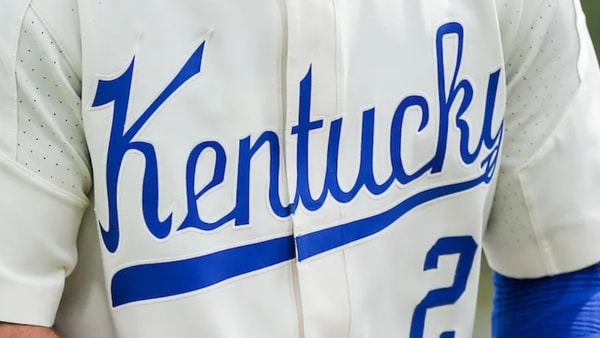Review: The OA

Stuck on a congested bridge, a commuter captures raw video on a cell phone of a woman darting between the cars in traffic. As the mysterious woman crosses the road and approaches the railing, passengers sensing the woman’s intentions, beckon for her to stop. Upon hearing their pleas, the distressed woman turns briefly, before jumping to her death. Miraculously, she survives, and that’s when we first meet our enigmatic protagonist, Prairie Johnson, a twenty-year old blind woman who inexplicably vanished from her parent’s home nearly seven years earlier. Confused, yet oddly guarded, Johnson cannot explain neither the events leading up to her disappearance, nor the strange markings carved on her back, but most bemusing of all–her preternatural ability to now see.
The OA is the latest binge-worthy offering from the pantheon that is Netflix. Released on December 16th, 2016, I finally got a chance to watch the entire first season over the weekend, and I can promise you that it’s the most deceptively engrossing and hauntingly ambiguous series that I’ve watched in a while–but it’s definitely not for everyone. Regardless, there’s no doubt The OA will be the most talked about, postulated, over-analyzed show, for the foreseeable future–that is until season two of Stranger Things drops sometime this summer. So whether you’re considering watching the show, stuck in the quagmire of the first episode, wondering why-in-the-hell you started it in the first place, or you’ve actually finished the final chapter, and are left scratching your head, I will do my best to keep this review as cogent and spoiler-free as possible.

Billed as a drama/sci-fi thriller, The OA is cinematically stunning. From its ethereally bizarre dreamlike sequences and celestial settings, and intimate confined interior spaces, along with breathy, lingering close-ups, the filmography is gorgeous, palpable, weighty and spring-loaded with tension. Apart from Prairie (Brit Marling), who is absolutley enchanting and ephemeral, the rest of the cast are both arresting yet polarizing at times. Pair this alongside themes and scenes that some might find disturbing, and narratives that at times are so far out there, so weird and puzzling, that many viewers simply won’t even make it to the halfway mark of the first episode since the show moves at an excruciatingly glacial speed which is fine for crafting a story, but painful for those eager to decipher the plot. Not surprising, it isn’t until the fifty plus minute mark of the hour-long inaugural episode that viewers actually begin to discern clues about the long, strange trip that is Prairie’s existence both in life–and in death.
The OA is a labyrinthian show, each episode building upon the last, slowly and deliberately constructing more layers, carving new pathways, drilling deeper, providing just enough clues, while loading the show with enough rabbit holes, red-herrings, and dead ends that will leave you with more questions than answers in the same vein as: Twin Peaks, Lost, True Detective, Stranger Things, and Westworld. In the end–if you’ve made it that far–you’ll either be contemplative and moved by the transcendental nature of the show or regretful and angry–courtesy of the controversial final episode–feeling like you just wasted an entire day’s worth of your life watching a television show.
Minor Spoilers Ahead. Proceed with caution. I’m warning you.

So what does it all mean? Are you sitting down? Why don’t you sit down. There might be more to Prairie Johnson’s/Nina’s story than meets the eye. After a traumatic childhood in which she survived a near-death experience (NDE)–a reoccurring theme throughout the show–and an abduction which left her psychologically and emotionally damaged, Prairie believes she is…wait for it…an inter-dimensional traveling angel. A celestial intermediary of sorts. The OA–Original Angel. So could Prairie really be an angel, sent as a messenger with the power to heal others with interpretive dance movements? That’s certainly plausible based on the clues revealed in the show. There is also evidence to the contrary, that might debunk this theory. Oddly enough for a show about angels, never once is any known deity, i.e. God or any faith, religion, or spiritual practice mentioned or referenced in the series. There are allusions to such things, but nothing concrete, nothing overt. Could she be in some version of purgatory, trapped between the living world and the spirit world? Or is she just a damaged and delusional individual suffering the mental trauma of a lifetime of really terrible and unspeakable life-changing events including: a brush with death, loss of a loved one(s), abandonment and loneliness, adapting to the cultural shift resulting from her adoption, not to mention her kidnapping, captivity, and torture, and this is her coping mechanism? Conceivably a runaway from a mental institution, possibly off her medication? Maybe she’s on one of the seven astral planes, in a coma, recovering from that jump from the bridge–if that even happened. But there’s proof on YouTube! Furthermore, what about Prairie’s fellow captives–the others, the five? Are they alternate versions of the modern day five, a band of diverse and marginalized individuals whom Prairie invites to share her story and impart the knowledge of inter-dimensional time travel and healing ways with? Or simply a cult-like quintet so desperate to find connection and belonging amidst the bleakness that engulfs their lives. Perhaps they’re all just fish, swimming in the waters of human consciousness, seemingly trapped within the glass walls of a pentagon shaped aquarium in the lobby of a hospital waiting room.

You decide–The OA is open for interpretation–and really that’s the beauty or flaw of shows that are this tenebrous. Watching each episode feels like a mixture of being in a sensory deprivation chamber with the Dalai Lama while watching Highway to Heaven, Touched By An Angel, spliced with art school interpretive dance videos–my only real complaint with the entire series, apart from the ending–and reimagined in Donnie Darko-esque fashion, without all the cheesy, preachy, and pretentious overtones. As if Sturgill Simpson’s song Turtles All the Way Down was made into a eight-part television series. Ultimately, The OA, is a methodical metaphysical zen-like miniseries–one that at times is soul-searching and other times downright WTF, but it’s certainly worth the binge. However, you may find more pleasure vacuuming, watching paint dry or waiting for water to boil more than this show, “so to each their own til’ we go home, to other realms our souls must roam, to and through the myth that we all call space and time.”
3.5/5 stars
The OA is rated TV-MA








Discuss This Article
Comments have moved.
Join the conversation and talk about this article and all things Kentucky Sports in the new KSR Message Board.
KSBoard